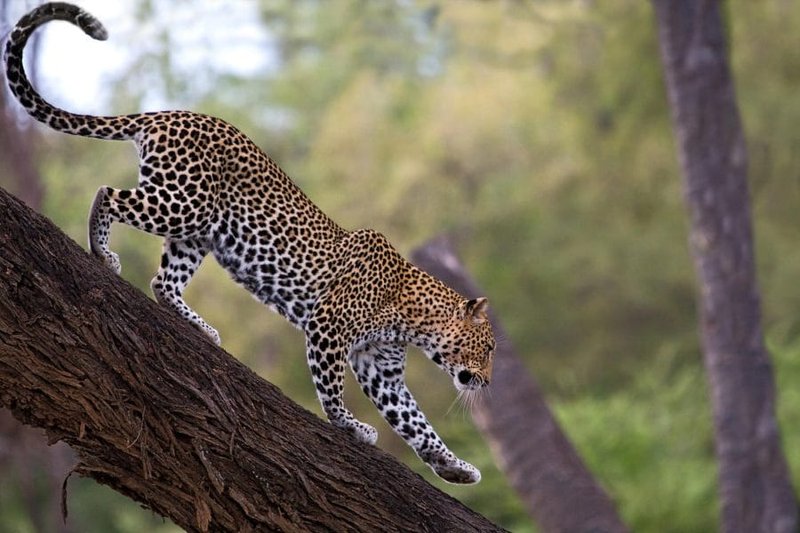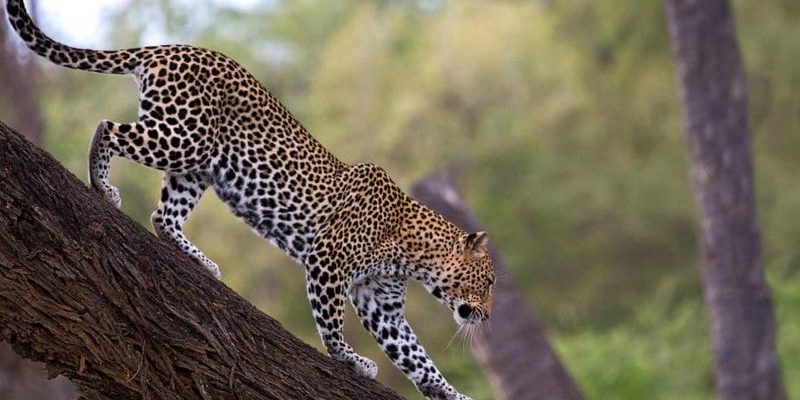
Imagine trying to navigate a world where food is scarce, weather can be extreme, and competition is fierce. Sounds tough, right? Yet, leopards have mastered the art of survival through a combination of clever hunting strategies, physical adaptability, and social intelligence. This article will explore the various ways leopards manage to live and thrive in their unpredictable habitats. Let’s take a closer look at their secret survival strategies.
Adaptability to Various Habitats
Leopards are incredibly adaptable animals. They can be found in a wide range of habitats, from grasslands and savannas to dense forests and mountains. This versatility is one reason they are one of the most widespread big cats in Africa and parts of Asia.
Why do they thrive in such different environments? Well, leopards have a few tricks up their sleeves. For starters, they are solitary hunters. This means they don’t have to rely on a pack, allowing them to roam and hunt in diverse places without needing a large territory. Their ability to camouflage is another crucial factor. With their beautiful spotted coats, they can blend into their surroundings, making it easier to sneak up on prey or hide from predators.
Here’s the thing: leopards can also adjust their hunting techniques based on the environment. In open grasslands, they may stalk their prey from a distance. In dense forests, they’ll leap from tree to tree, using their agility to surprise unsuspecting animals. This flexibility is a huge reason why leopards can survive where other species struggle.
Their Diet: Opportunistic Feeders
Leopards are often described as opportunistic feeders, which means they’ll eat whatever is available. This trait plays a significant role in their survival. While they prefer larger ungulates like antelope or deer, they don’t shy away from smaller animals such as birds, rodents, or even insects. If they find an easy meal, they won’t hesitate to take it.
This adaptability in diet is crucial, especially when times are tough. During droughts or in harsh environments where prey is scarce, leopards can rely on their ability to catch smaller animals or scavenge leftovers from larger predators. This diverse diet ensures they won’t go hungry, no matter the season.
Plus, they’re skilled climbers! They often drag their prey up into trees to keep it safe from scavengers. This behavior highlights their survival instincts—by using the environment to their advantage, they can feast without worry.
Physical Adaptations for Survival
Leopards are built for survival. Their bodies are perfectly designed for both hunting and navigating tough terrains. Let’s break down some of their key physical traits:
- Muscular build: Leopards possess strong muscles and flexible bodies, enabling them to sprint quickly and leap impressive distances when chasing prey or escaping threats.
- Large paws: Their broad, padded paws help soften their landing when they jump, allowing for stealthy movements through various environments.
- Sharp claws and keen senses: Leopards have retractable claws and excellent night vision, making them proficient hunters, especially during dusk and dawn when many animals are active.
Honestly, their physical traits make them some of the best ambush predators in the animal kingdom. Whether they’re climbing trees, running through the grass, or stalking their prey, leopards showcase a masterclass in physical adaptation.
Behavioral Adaptations: Stealth and Solitude
Leopards are known for their solitary behavior, which actually boosts their chances of survival. Unlike lions that rely on teamwork, leopards prefer to hunt alone, which means they don’t have to share their food. This can be an advantage in environments where competition is fierce.
Their stealth is another vital trait. Leopards are often referred to as “ghosts of the savanna.” They can move quietly through their surroundings, using their spotted coats to stay hidden. You might be wondering how they manage to remain undetected. Well, they tend to stay in the shadows, waiting patiently for the perfect moment to strike.
Moreover, leopards have an impressive ability to mark their territory with urine and scratch marks. This helps them communicate with others of their kind, letting them know where they stand. By maintaining a solitary lifestyle and marking their territory, leopards effectively minimize conflict and enhance their chances of survival.
Water and Temperature Adaptations
Living in harsh environments means dealing with extreme temperatures and unpredictable water sources. Leopards, however, have unique adaptations to cope with these challenges.
For instance, they can regulate their body temperatures quite well. In hot climates, leopards are more active during the cooler parts of the day—like early mornings and late evenings. During peak warmth, they often find shade to rest, conserving energy and avoiding overheating.
As for water, leopards have a fascinating ability to survive with little of it. While they do enjoy water and can swim when necessary, they can go several days without drinking. They famously obtain moisture from their prey, which is an impressive survival tactic when water sources are limited.
This adaptability to both temperature and water has played a significant role in their overall success as a species.
Conservation Challenges and Their Impact
Despite their impressive survival skills, leopards face significant threats today. Habitat loss due to human encroachment, poaching, and conflicts with farmers all pose serious challenges to their survival. The irony is that as adaptable as they are, their environments are rapidly changing.
When leopards lose their habitats, they struggle to find enough food and safe places to live. Moreover, as humans expand into their territories, conflicts arise. Farmers often see leopards as threats to their livestock, leading to retaliatory killings.
So, what can we do about it? Supporting conservation efforts, such as protected wildlife areas and responsible farming practices, can make a difference. Educating others about the importance of leopards in ecosystems and advocating for their protection is essential.
The Beauty of Leopard Survival
Ultimately, leopards are magnificent animals that embody resilience and adaptability. Their ability to thrive in harsh environments showcases the beauty of nature’s designs. From their remarkable hunting skills to their clever adaptations, these big cats are living proof of the complex balance between survival and adaptation.
While they face challenges, our awareness and efforts in conservation can help ensure that future generations will continue to marvel at these incredible creatures. Whether you’re hiking in Africa or simply enjoying nature documentaries, remember that leopards are a vital part of our world’s intricate web of life. Let’s work together to protect them.

